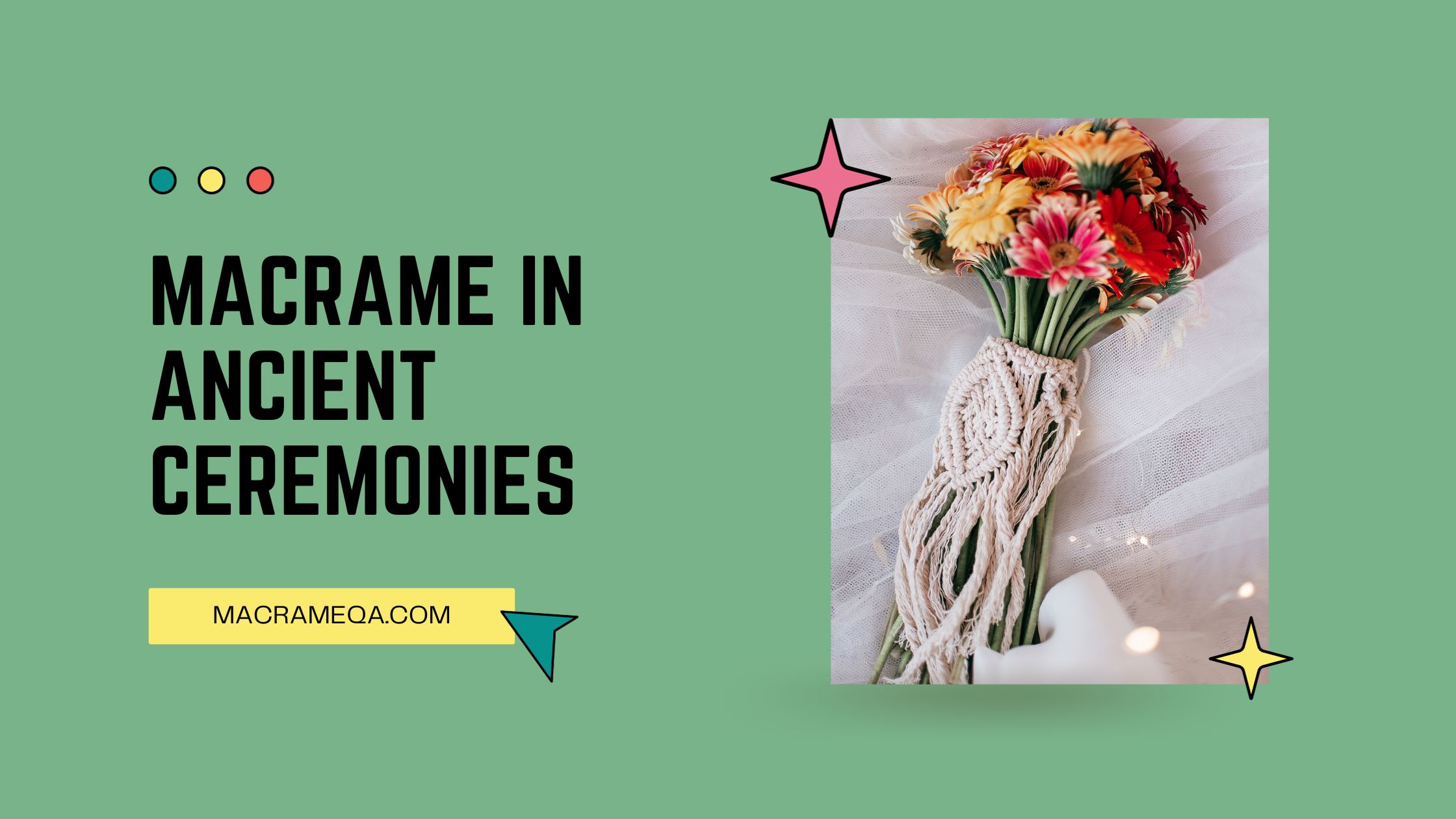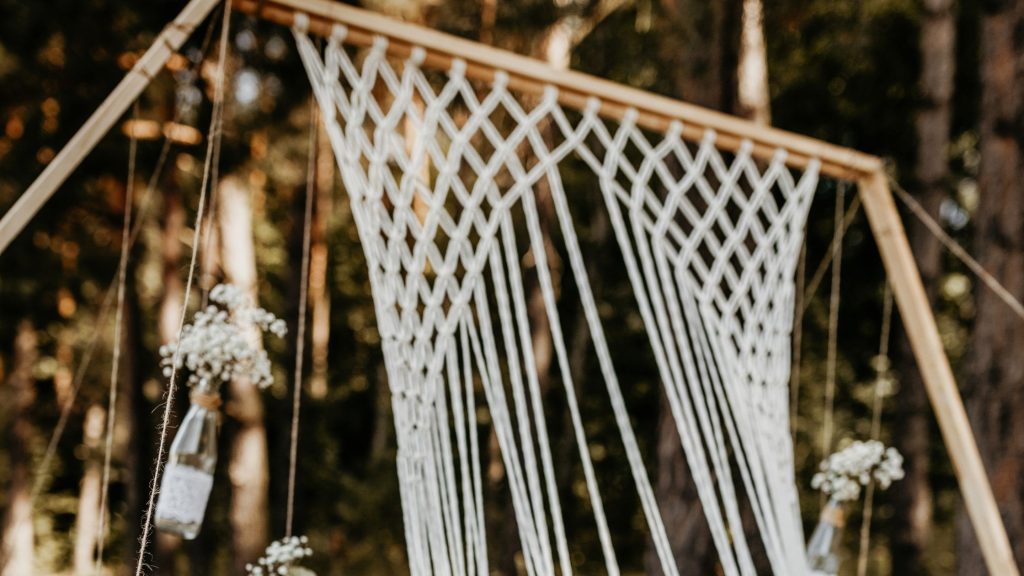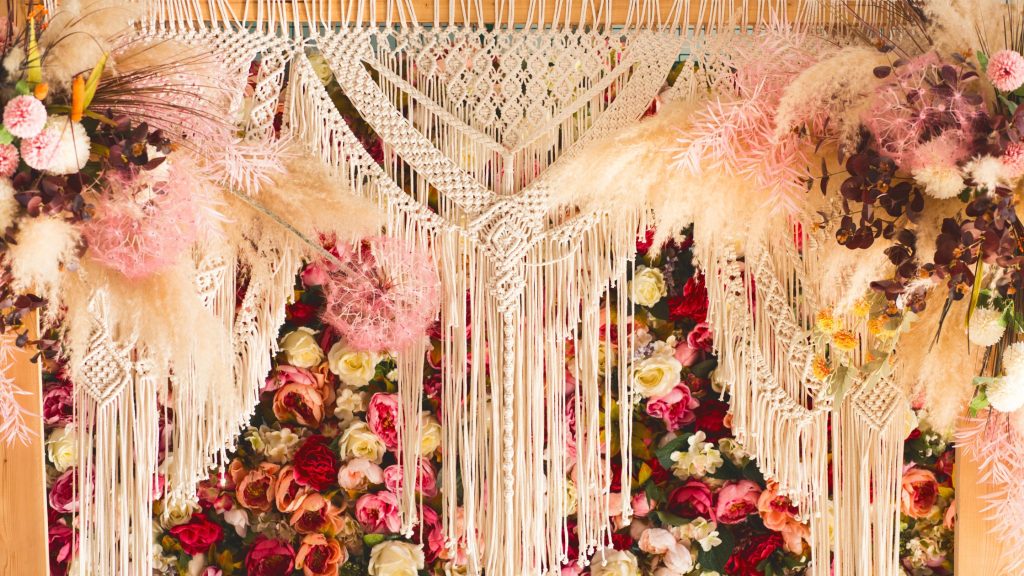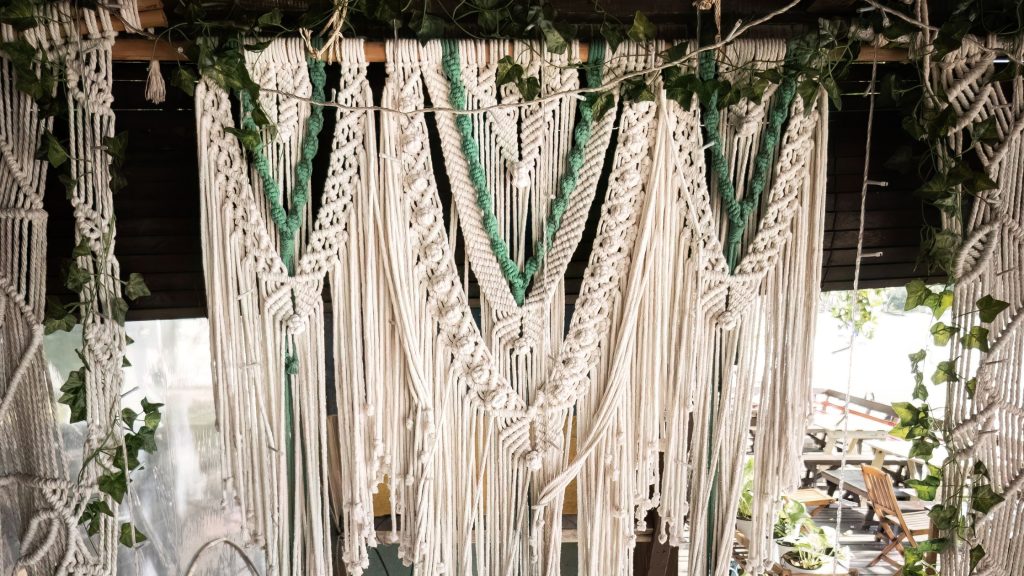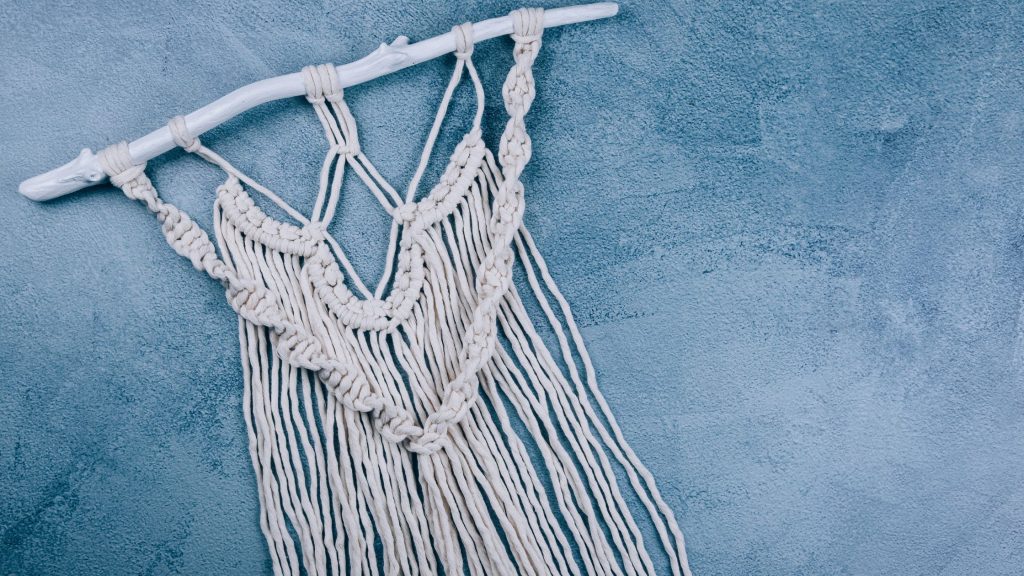Macrame, the art of knotting cords together to create intricate patterns, has been a part of human culture for centuries. But beyond its decorative appeal, macrame has also played a significant role in ancient ceremonies. From wedding rituals to spiritual gatherings, the intricate designs of macrame were believed to hold symbolic meanings and served as a form of spiritual connection. In this article, we will explore the fascinating history and significance of macrame in ancient ceremonies, shedding light on its enduring importance in different cultures around the world. So, come on a journey with us as we unravel the hidden stories behind the knots and discover the profound impact of macrame in ancient times.
Macrame in Ancient Ceremonies
Historical Background
Macrame, a form of textile art, has a rich history that dates back centuries and has been intertwined with various ancient ceremonies. This intricate craft originated in the 13th century in the Arabic countries, later spreading to Europe and America through trade routes and explorations. Macrame is believed to have been used in ancient times as a practical and decorative technique to create utilitarian items, but it also played a significant role in ceremonial practices.
Overview of Macrame
Macrame is an art form that involves knotting and tying various threads or cords to create intricate patterns and designs. The word “macrame” itself has Arabic origins, with “miqramah” meaning “fringe” or “ornamented fringe.” This technique gained popularity during the Victorian era when it was incorporated into fashion, home decor, and even in the creation of elaborate curtains and canopies for special occasions.
Significance of Macrame in Ancient Ceremonies
Macrame held a vital role in ancient ceremonies due to its aesthetic beauty, versatility, and symbolic meanings. It was often used to create sacred objects, costumes, and decorative elements that enhanced the ambiance and spiritual significance of the ceremonies. Macrame pieces were often imbued with symbolic representations and cultural meanings that added depth and significance to the rituals.
Materials and Techniques
Types of Materials Used
Macrame artists in ancient times used a variety of materials, including natural fibers such as jute, linen, cotton, and hemp. In some cultures, materials like gold or silver threads were also incorporated to signify opulence and wealth. The choice of material depended on the purpose of the ceremonial piece, the cultural traditions, and the available resources within the region.
Macrame Knots and Techniques
Macrame artists utilized different types of knots and techniques to create intricate patterns. Some of the most common knots used include the square knot, half-hitch knot, double half-hitch knot, and lark’s head knot. These knots were skillfully combined and tied in various patterns, resulting in unique and elaborate macrame designs. The technique required precision and patience, as each knot was thoughtfully crafted to create a cohesive and visually appealing final product.
Symbolism and Meanings
Symbolic Representations in Macrame
Macrame was rich in symbolism, and the intricate patterns and designs carried significant meanings. For example, certain knots or motifs were believed to bring luck, protection, or fertility. The inclusion of specific colors and materials also held symbolic significance, representing various aspects such as purity, spirituality, or connectedness to the divine. These symbolic representations added depth and intention to the ceremonial pieces, making them more than just decorative items.
Cultural Significance of Macrame Patterns
Different cultures embraced specific macrame patterns that carried cultural significance. For instance, the Celtic knot, with its interwoven lines representing eternal love and unity, was often incorporated into ceremonial belts, headpieces, and wedding accessories. In Native American cultures, the use of specific patterns and motifs in macrame pieces represented tribal affiliations, spiritual connections, and ancestral traditions. These patterns helped preserve cultural heritage and served as a visual language within the ceremonies.
Specific Ceremonial Uses
Weddings and Love Rituals
Macrame played a central role in weddings and love rituals in many ancient cultures. Intricately crafted macrame veils, backdrops, and altar decorations added a touch of elegance and sacredness to the ceremonies. The use of specific knots and patterns symbolized unity, harmony, and everlasting love. Macrame love knots were often exchanged between couples as a symbol of their commitment and bond.
Religious Ceremonies
In religious ceremonies, macrame served as a means to enhance the sacred atmosphere and visually represent spiritual concepts. Elaborate macrame wall hangings, tapestries, and dividers adorned the spaces, creating a sense of reverence and beauty. These ceremonial pieces often incorporated religious symbols, colors, and patterns that held deep spiritual meanings for the worshippers.
Celebrations and Festivals
Macrame was also present in various celebrations and festivals, adding a touch of festivity and joy. Intricate macrame bunting, garlands, and decorative pieces adorned the streets, homes, and ceremonial spaces, creating a vibrant and celebratory ambiance. These macrame creations were often made in specific colors or patterns associated with the occasion, making them a visual representation of the festivities.
Macrame as Spiritual and Decorative Art
Macrame as Sacred Art
Macrame was considered a sacred art form in many ancient cultures. The process of creating macrame was seen as a meditative practice, allowing the artist to connect with their spirituality while forming each knot with intention and care. The resulting macrame pieces held a special energy, serving as bridges between the physical and spiritual realms. They were often used in sacred spaces, temples, and shrines to evoke a sense of connection and reverence.
Macrame as Decorative Element in Ancient Spaces
In addition to its spiritual significance, macrame was also appreciated for its decorative value in ancient spaces. Macrame wall hangings, curtains, and room dividers adorned palaces, temples, and ceremonial halls, creating a visually stunning environment. The intricate patterns and textures of macrame added depth and dimension to the spaces, turning them into works of art that were both functional and aesthetically pleasing.
Transformation and Passage Rites
Transitional Phases in Life
Macrame played a role in various rites of passage and transitional phases in life. From birth to marriage and even death, macrame was used to mark and honor these significant moments. For example, macrame cradle hangings were made to celebrate the birth of a child, while macrame wedding veils symbolized the transition from singlehood to marriage. Macrame funeral shrouds were also utilized to honor and remember the departed, providing comfort and significance during the mourning process.
Role of Macrame in Rites of Passage
In rites of passage ceremonies, macrame was often used to visually represent the transformative nature of the event. The intricate knots and patterns symbolized the challenges, growth, and initiation that individuals underwent during these transitions. Macrame belts, jewelry, or garments were worn by the individuals journeying through these rites, serving as tangible reminders of their personal growth and transformation.
Macrame as an Offering
Macrame as an Act of Devotion
In ancient ceremonies, macrame was sometimes created as an offering to gods, deities, or ancestors. Macrame artists would meticulously craft pieces imbued with love, dedication, and gratitude, using their skills and creativity as an act of devotion. These macrame offerings were believed to create a sacred connection between the mortal and divine realms and were often placed on altars or sacred spaces as a form of reverence and homage.
Offerings and Macrame in Sacred Spaces
Macrame was commonly used to enhance the sacredness of spaces and to make offerings to the divine. Elaborate macrame wall hangings, plant hangers, and dividers adorned temples, shrines, and altars, providing an aesthetically pleasing and spiritually meaningful environment. Often, these macrame pieces were created with specific intentions and prayers, infusing them with spiritual energy and serving as offerings of love and gratitude.
Legacy and Revival
Macrame in Modern Ceremonies
While ancient macrame techniques and traditions have evolved, they still hold a place in modern ceremonies. Macrame is often seen in contemporary weddings as decorative elements, backdrops, and even wedding favors. The revival of macrame in modern ceremonies showcases its enduring beauty and the timeless appeal it holds in marking significant life events.
Contemporary Revival of Ancient Macrame
In recent years, there has been a resurgence of interest in macrame, with artists and enthusiasts embracing this ancient craft. People are once again exploring the various knots, patterns, and techniques used in macrame to create beautiful and meaningful pieces. Macrame workshops and classes are becoming popular, allowing individuals to reconnect with their creativity and learn the art of macrame.
Impact of Macrame on Ancient Cultures
Social and Cultural Significance of Macrame
Macrame had a significant impact on ancient cultures, both socially and culturally. It served as a medium for cultural expression, with different regions and tribes developing their unique styles and patterns. Macrame was often passed down through generations, preserving cultural heritage and creating a sense of identity and pride within communities. The craftsmanship and skill required to create macrame pieces also contributed to the social and economic status of macrame artists.
Artistic Expression in Ancient Societies
Macrame allowed individuals in ancient societies to express their creativity and artistic abilities. It provided an outlet for personal and communal storytelling through the use of symbolic knots, patterns, and materials. The beauty and complexity of macrame pieces were not only admired but also recognized as a form of artistic expression, elevating the status of macrame artists within their communities.
Conclusion
Macrame had a profound and enduring influence on ancient ceremonies. It was more than just a decorative art form; it served as a spiritual, cultural, and symbolic element in significant life events. The intricate knots, patterns, and materials used in macrame pieces represented deeper meanings that enhanced the ceremonial experience and showcased the rich traditions and beliefs of ancient cultures.
As we embrace and appreciate the beauty of macrame in ancient ceremonies, it is crucial to preserve and honor this rich tradition. By studying and practicing the ancient techniques, we can ensure the continuation of macrame as an art form that connects us to our history and cultural heritage. The revival of macrame in modern times allows us to appreciate the artistic and spiritual value it holds, paying homage to the ancient craftspeople who used it to elevate and enrich their ceremonial practices.

